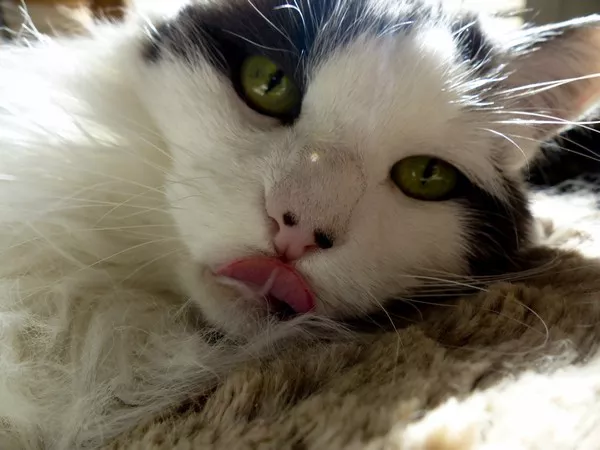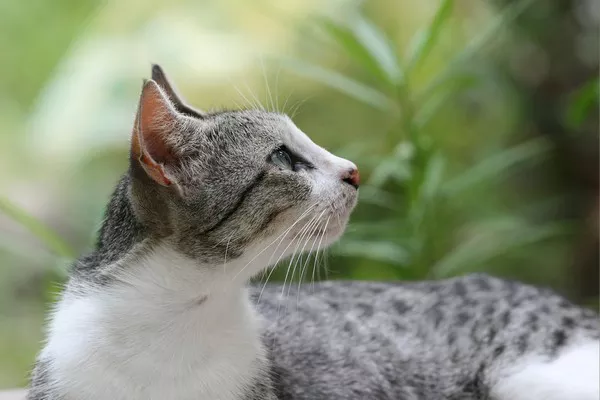As a pet owner, few things are as frustrating as watching your cat munching on your precious houseplants. Whether it’s a delightful fern, an expensive orchid, or a simple spider plant, your feline seems to find joy in devouring them. While this behavior might seem innocent, it can pose serious risks to your cat’s health and cause significant damage to your beloved plants. If you’re wondering how you can stop your cat from eating your plants, you’re not alone. Many cat owners face this issue, and fortunately, there are several strategies you can adopt to discourage this behavior.
In this article, we’ll explore the potential reasons why cats eat plants, the risks involved, and practical tips on how to stop your cat from snacking on your greenery. Additionally, we will touch on how good cat feeding practices play an essential role in preventing this behavior.
Why Do Cats Eat Plants?
Before delving into the solutions, it’s important to understand why cats engage in this behavior in the first place. Cats are obligate carnivores, which means that their diet is predominantly meat-based. However, many cats develop a habit of eating plants, and this behavior can be attributed to a number of reasons.
1. Boredom and Curiosity
Cats are naturally curious creatures, and they often explore their surroundings by nibbling on objects, including plants. This behavior is most common in kittens, who are still learning about the world around them. However, even adult cats may start chewing on plants when they are bored or feeling under-stimulated. If your cat isn’t getting enough physical or mental stimulation, they may turn to plants as a form of entertainment.
2. Nutritional Deficiencies
Although cats are obligate carnivores, some cats may eat plants in an attempt to fulfill a nutritional need. Certain plants, such as grass, contain fiber, which may aid in digestion. Cats might eat plants if they feel they need more fiber in their diet. This could be a sign that your cat’s cat feeding routine is lacking in certain nutrients, or they may not be getting enough roughage in their meals.
3. Instinctual Behavior
Wild cats often eat plants and grasses for medicinal purposes. In the wild, cats might ingest grass to induce vomiting or to help with the elimination of hairballs. This instinct can carry over to domestic cats, leading them to chew on plants in your home. Though it may seem strange, this behavior is often rooted in survival instincts.
4. Taste or Texture
Some cats simply enjoy the texture or taste of certain plants. For example, many cats love the taste of catnip, which belongs to the mint family. Other plants, like spider plants or wheatgrass, have a texture that might appeal to your cat’s playful nature. In these cases, the plant isn’t a source of nutrition but rather a form of sensory entertainment.
5. Pica
Pica is a condition in which animals, including cats, eat non-food items. This could include plants, dirt, fabric, or other household objects. If your cat is exhibiting a persistent desire to eat plants or other non-food substances, it could be a sign of pica, which may require attention from a veterinarian.
Why Is Eating Plants Dangerous for Cats?
While cats may find plants intriguing and even enjoyable to eat, there are several risks involved in this behavior. Some plants can be toxic to cats, leading to symptoms ranging from mild gastrointestinal distress to life-threatening conditions.
1. Toxic Plants
Many common houseplants are poisonous to cats. For example, lilies, poinsettias, and aloe vera are all toxic to cats and can cause severe health problems if ingested. Symptoms of plant poisoning in cats can include vomiting, diarrhea, drooling, lethargy, and in extreme cases, organ failure or death.
2. Digestive Issues
Even non-toxic plants can cause digestive upset in cats. Plants like ferns or spider plants can be difficult for cats to digest, leading to vomiting or diarrhea. Over time, consuming plants can cause irritation to your cat’s stomach or intestines.
3. Choking Hazards
Some plants have small, sharp parts that can pose a choking risk. If your cat chews on a plant and swallows a piece of it whole, there’s a chance it could get stuck in their throat or digestive tract, causing a blockage.
4. Damage to Your Plants
Apart from the health risks to your cat, chewing on plants can also lead to irreversible damage. Your prized plants may be chewed down to the stubs, leaving you with nothing but wilted stems. For a dedicated plant lover, this can be incredibly frustrating and disheartening.
How to Stop Your Cat from Eating Your Plants
Now that we’ve discussed why cats might eat plants and the potential dangers involved, let’s explore effective strategies to discourage this behavior. Keep in mind that consistency and patience are key when implementing these solutions.
1. Provide Alternative Chew Toys
One of the most effective ways to stop your cat from eating plants is to offer them an alternative source of entertainment and stimulation. Invest in a variety of chew toys, especially those designed to engage cats’ natural instincts. You can also get them toys that are infused with catnip, which might help draw their attention away from your plants.
2. Increase Physical and Mental Stimulation
Cats are curious and active creatures that need mental and physical stimulation to stay happy and healthy. Boredom is a common cause of destructive behavior, including plant-eating. Try providing more activities for your cat to enjoy, such as puzzle feeders, interactive toys, or climbing trees. A well-stimulated cat will be less likely to engage in unwanted behaviors like chewing on plants.
3. Ensure a Balanced and Nutritious Diet
A well-balanced cat feeding routine can help prevent nutritional deficiencies that might drive your cat to seek out plants. Ensure that your cat’s diet includes the necessary vitamins and minerals, including fiber, which can help with digestion. If you suspect that your cat is eating plants due to a lack of fiber, consider incorporating fiber-rich foods into their diet, such as pumpkin or specific commercial cat food that contains added fiber.
4. Use Deterrents on Your Plants
There are various products available that can help deter cats from chewing on plants. Bitter sprays, for instance, are designed to make plants taste unpleasant to cats. Simply spray your plants with a non-toxic deterrent, and most cats will learn to avoid them after a few unpleasant encounters. Another option is to use physical barriers, such as decorative mesh or plant cages, to make it harder for your cat to access the plants.
5. Place Plants in Cat-Proof Locations
If your cat is particularly persistent in its plant-eating behavior, consider relocating your plants to areas that are harder for your cat to reach. This may include hanging plants or placing them on shelves that are out of your cat’s reach. If that’s not feasible, try using plant stands or terrariums with lids to keep your plants secure.
6. Grow Cat Grass or Catnip
If your cat has a strong desire to chew on plants, why not provide them with a plant that’s safe and enjoyable for them to eat? Cat grass (usually wheatgrass) and catnip are both safe for cats to consume and can satisfy their cravings for plant matter. By offering them a designated “cat-friendly” plant, you can redirect their attention away from your houseplants.
7. Redirect Their Attention
If you catch your cat in the act of eating a plant, redirect their attention immediately by offering them a toy or engaging them in a game. Cats respond well to positive reinforcement, so try rewarding your cat with praise or a treat when they play with their toys instead of eating the plants. Over time, they will associate their toys with fun and their plants with displeasure.
8. Consult a Veterinarian
If your cat’s plant-eating behavior continues despite your best efforts, it might be time to consult a veterinarian. If you suspect that your cat is suffering from pica or a nutritional deficiency, your vet can help diagnose and treat the underlying cause. They may also offer additional behavioral solutions or dietary recommendations to address the issue.
Conclusion
Preventing your cat from eating your plants requires a combination of understanding, patience, and proactive steps. By offering your cat alternative sources of stimulation, ensuring they receive a balanced diet, and using deterrents, you can keep your plants safe and your cat happy. Additionally, good cat feeding habits can play an important role in reducing the likelihood of plant-eating behaviors. If you continue to have difficulty, don’t hesitate to reach out to a veterinarian for advice and support.
Ultimately, creating a cat-friendly environment that respects both your love for plants and your cat’s natural instincts is the key to solving this problem.
Related Topics



























